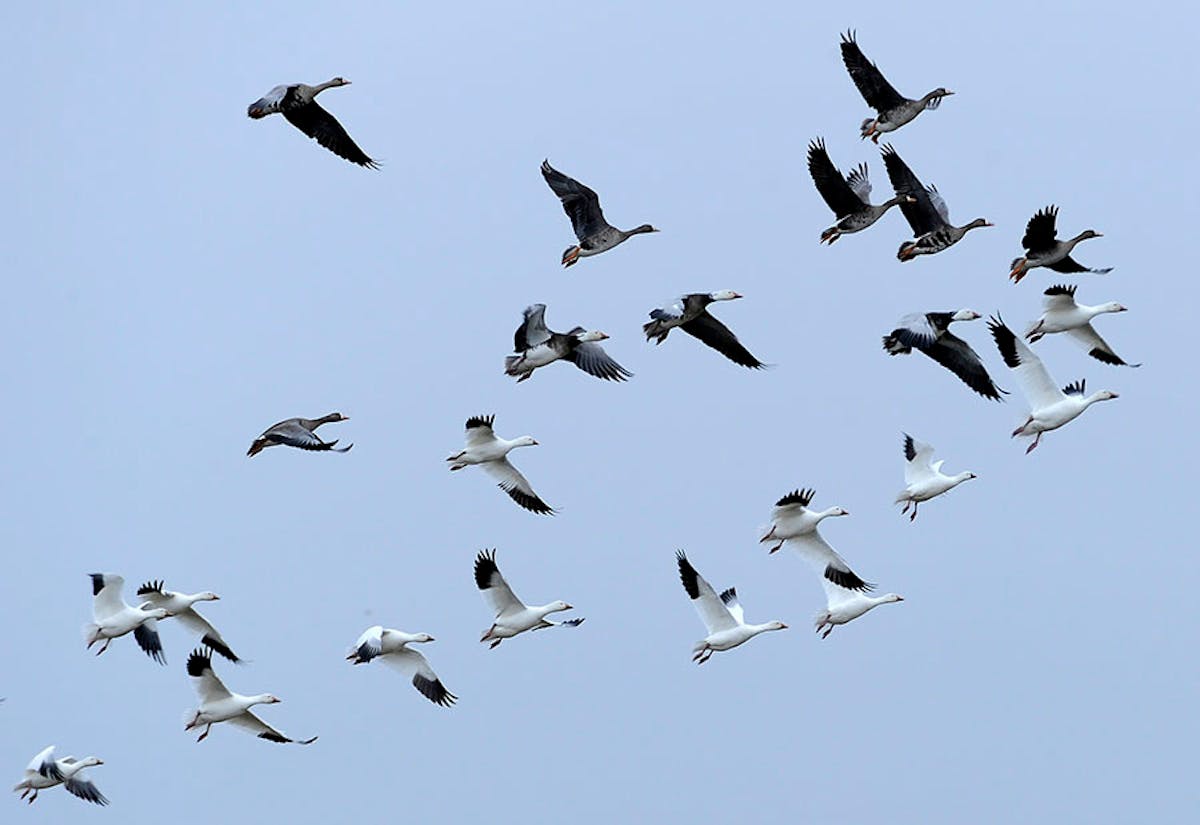Conservationists seeking to protect migratory birds from the glass facade of U.S. Bank Stadium are less than impressed with an environmental award just given to the mammoth football palace.
"The stadium won't truly be green until action is taken to prevent the many unnecessary bird deaths occurring there now," said Ann Laughlin, who belongs to a coalition of bird conservation groups that have advocated for bird-safe glass for several years.
The Minnesota Sports Facilities Authority (MSFA) released a statement last week saying the stadium had received a platinum LEED rating for environmental operations. LEED is a national certification program that promotes the design and construction of green buildings, and platinum is the highest of its four ratings.
The release, which noted the building already had received a gold LEED award for environmentally friendly design, touted the stadium's recycling, the amount of waste diverted from landfills, donated food and renewable energy credits.
But no mention was made of birds. Former legislator Phyllis Kahn, who sponsored a bill for bird-safe buildings, said she found the platinum LEED rating for the stadium incredible.
"My biggest objection was that an environmental rating wouldn't look at the effect on birds," she said.
MSFA Chairman Michael Vekich said the LEED rating system is "independent from wildlife conservation."
He added that the MSFA expects to get the results later this year of an avian death study it commissioned in 2016.
But Laughlin remains frustrated because, she said, her group documented many bird deaths in 2016 and because the MSFA had disregarded warnings about U.S. Bank's shiny glass surface as far back as 2012.
After the Legislature voted in 2012 to build the $1.1 billion stadium with nearly $500 million in taxpayer money, the state passed a law requiring publicly subsidized construction to have bird-safe glass. Bird lovers said the stadium's 200,000 square feet of glass walls, especially the western facade with its five pivoting doors, would be deadly to birds soaring along the Mississippi River's migratory flyway.
The MSFA approved the bird study a month before the stadium opened, agreeing to split the $300,000 cost with the Minnesota Vikings, the building's main tenant.
The two organizations released a joint statement Tuesday that they were "contributing to the conservation of migratory birds by improving our scientific understanding of bird collisions." Vikings officials said they would make no further comment until the study's results are released.
The study — a joint effort of Audubon Minnesota, the University of Minnesota and Oklahoma State University professor Scott Loss — was designed to track birds during two spring migrations and two in the fall, up until last year.
Loss is recognized nationally as a leading expert on human-related impact on birds and other wildlife. He said the study has been completed and submitted to a scientific journal for peer review and, if satisfactory, publication. Loss declined to identify the journal, given that the paper hadn't yet been accepted and published, but said the peer review process was going well.
The study includes daily surveys of the stadium's grounds and other Minneapolis buildings during migration seasons, Loss said.
"The findings for the stadium have been assessed in comparison to other surveyed buildings," he said, adding that the peer review before publication "will ensure the highest possible transparency, validity, and credibility of the study."
Upon publication, all methodology, findings, raw data and analysts will be "completely open" to the public, Loss said.
Conservationists have repeatedly expressed faith in the integrity of the study. They're also persistent.
Laughlin is among a small group of conservationists who rarely miss a monthly meeting of the MSFA. She said there's little doubt the study will find dead birds. In their own preliminary study in the fall of 2016, she said, her group found lots of dead birds outside the stadium in the early morning hours before cleaning crews arrived: hummingbirds, warblers and sparrows.
"We're working on the assumption that there's been a lot of dead birds and it's a problem," she said.
Once the results of the study become public, it's unclear what, if anything, might be done. When the study was approved, a memorandum explicitly stated that the Vikings weren't obligated to do anything to protect birds.
The MSFA, which oversees the stadium on behalf of taxpayers, works with the Vikings on stadium upkeep and has a fund available for improvements. Laughlin said she believes a fix wouldn't be overly expensive and could be as easy as applying a transparent film to the most dangerous part of the building, the western wall about 40 to 60 feet above the ground.
"It's just aggravating because we'll now be in the fall migration and birds will begin smashing into it," Laughlin said, referring to the stadium. "That's not very green."
Rochelle Olson • 612-673-1747 Twitter: @rochelleolson
Two stalled Duluth housing projects move ahead

Omar appears at pro-Palestinian protest at University of Minnesota; 9 arrested earlier
2 dead in Lino Lakes, no known threat to public, police say
Teen charged with murder in deadly St. Paul shooting last month

